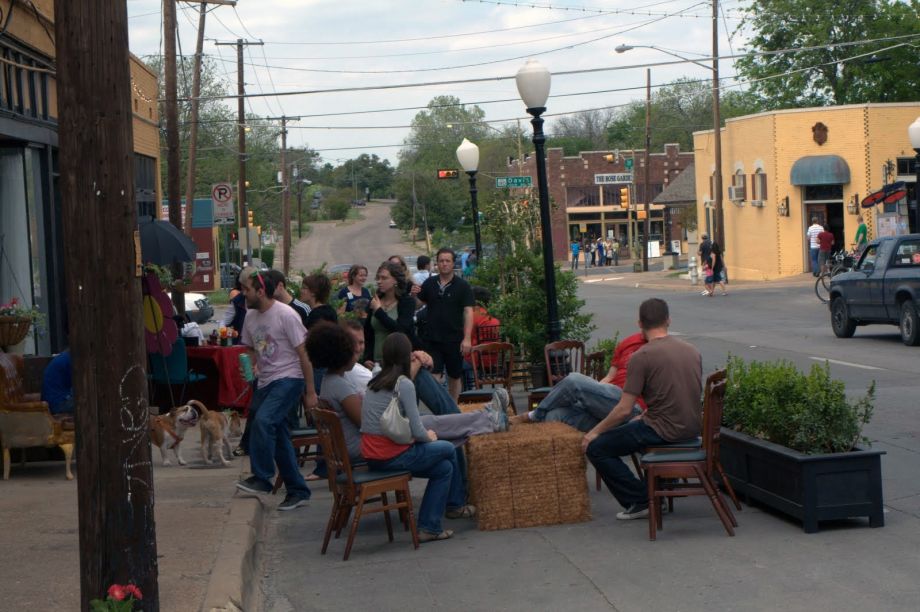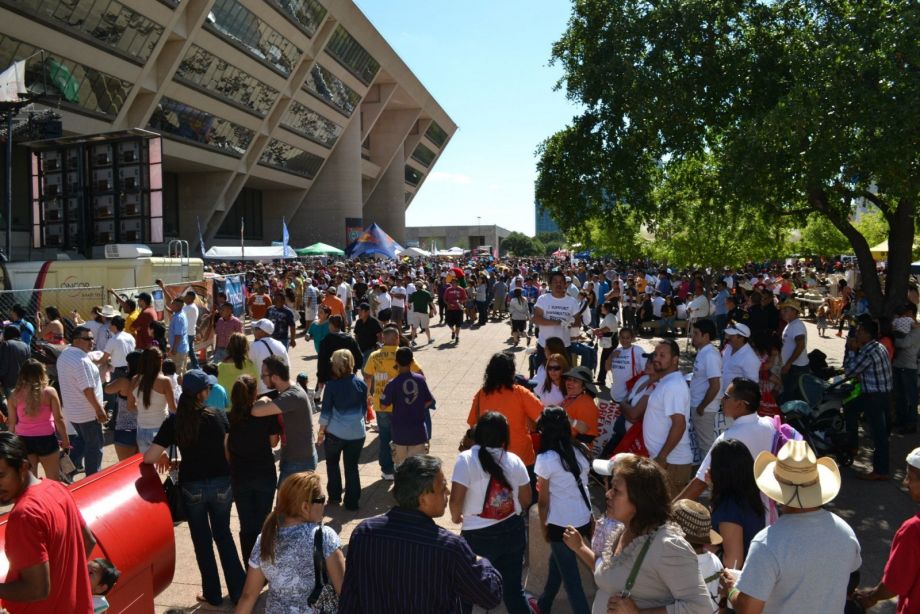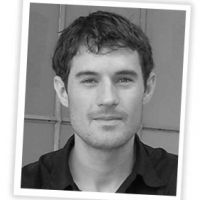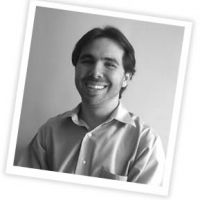Are You A Vanguard? Application Deadline Extended
A Build a Better Block installation in Kansas City inspired by activists in Oak Cliff, Dallas. (Photo credit: Build a Better Block)
This is your first of three free stories this month. Become a free or sustaining member to read unlimited articles, webinars and ebooks.
Become A MemberThis feature is an excerpt from a new book out from Island Press, Tactical Urbanism: Short-Term Action for Long-Term Change.
Vacant lots. Empty storefronts. Run down buildings, and scantly used parking lots. Overly wide streets for driving. This is a disheartening scene that can be found in almost every American city. And while many urban neighborhoods are thriving, too many others have not recovered from a half-century of systemic disinvestment. Bringing needed amenities to those – young and old – who have endured these conditions is hard to achieve because building rehabilitation costs are high and municipal policies and ordinances remain onerous and outdated. Yet, so many of these places have a strong social fabric, an interesting history, and possibly a bright future — and in Dallas, a group of artists and activists have shown us that you don’t need to wait for an angel investor or benevolent government agency to play the role of savior. Instead, the people that live in a neighborhood can jumpstart its revitalization in a single weekend, armed with nothing more than their energy, ideas and donated materials.
After decades of retail disinvestment and auto-centric zoning, the once bustling Tyler Street in Oak Cliff, a historic streetcar neighborhood located three miles southwest of downtown Dallas, embodied many of the urban “dont’s” described above. So a small group of neighborhood activists, led by resident Jason Roberts, a musician turned IT consultant, decided to fix things up.
Roberts had cut his teeth on urban planning issues while successful advocating to bring a historic streetcar and theater back to Oak Cliff. But as time went on, he began to feel that the majority of his frustrations were rooted not in individual buildings or modes of transport, but in the city’s overall approach to land use and transportation. He felt that the city itself was preventing the changes that he and his neighborhoods wanted to see: more street life, more bicycle infrastructure and safer streets.
“When the streetcar went away in 1956 two of the major streets became one-way, so you lost 50 percent of the [retail] visibility and made it an unsafe, high-speed corridor. These blocks were built for people, but the environment around them became inhospitable,” Roberts explained to me when we met up in a Brooklyn coffee shop in 2013. He described bringing together a group of likeminded neighbors in 2010 to discuss how to combat Oak Cliff’s challenges.
The group discussed the sheer number of barriers citizens must overcome in order to add the placemaking elements that make streets friendly for people. “Why do we still have these ordinances that disallow the congregation of people on a sidewalk? Or require a $1,000 fee just to put flowers on the sidewalk?” asked Roberts. The city’s zoning code also required off-street parking – a pernicious yet common urban policy still found in most American cities that results in more asphalt, but also higher redevelopment costs that often stymie affordable housing and would-be small business owners and entrepreneurs. At nearly 70-years old, the Dallas zoning code was simply outdated; it didn’t reflect how people want to live today. No wonder little economic development was happening in Robert’s corner of Oak Cliff.
“We were inspired by the work of Shephard Fairey, Banksy and other street artists making people think differently about numerous social issues,” says Roberts. “So we began to brainstorm how that line of thinking – the use of highly visible interventions – might be applied to the creation of bike lanes, active storefronts, and other neighborhood amenities we all desired. Collectively, we thought a temporary neighborhood improvement project might help make people think differently about Dallas”.
Little did they know that the idea – Build a Better Block (almost called ‘The Perfect Block’) – would some day help people think differently about moribund blocks not only in Dallas, but in cities as diverse as Tehran, Melbourne, and Atlanta.
The people that live in a neighborhood can jumpstart its revitalization in a single weekend.
Using a technique they call “blackmailing yourself,” the group publicly announced their intentions in a 2010 Bike-Friendly Oak Cliff blog post penned by Roberts. He committed to “creating a ‘living block’ art installation, where we’ll be taking a car-centric four lane street with poor zoning and restrictive development ordinances, and convert it into a people-friendly neighborhood block. For two days only, we’ll install three pop-up businesses, including a coffee shop, flower store, and kids’ art studio and we’ll be bringing in historic lighting, outdoor cafe seating, and more.”
“This event is being developed to highlight the changes Dallas should focus on if it truly wants to compete with other major US cities, ” Roberts wrote.
Still today, Roberts is very pointed in framing the project as for and by the neighborhood. “We’re trying to dispel the notion this can only be done by architects,” he says. “Anyone can make a great place, and when you bring this mix of folks beyond just one discipline we get great ideas we might not have thought of otherwise.”
The group that assembled to bring the vision to life was a disparate one, Roberts recalls.
“One guy had access to a shop truck, and another one had staging materials, things like historic street lamps and benches,” he says. “My other friend had a restaurant and we borrowed his coffee urns. Some of my other friends were Etsy artists and we decided they should take over a vacant retail space we had permission to use. My now business partner, Andrew Howard, heard what we were up to and offered help. I didn’t know he was an urban planning consultant at the time. I told him to go paint a bike lane. He said he planned and designed them for clients all the time but had never actually made one.”
Howard, who was instantly enthralled with the actual ‘doing’ element of the project, called it a ‘living charrette’.
“There I was, actually painting the bike lanes we normally design on a computer screen,” he remembers. “It was a very different and tactile experience. I was hooked.”
The group’s efforts could be described not only as tactile, but tactical as well. The organizing group identified the barriers to revitalization, established a vision for what they wanted their neighborhood to become, and stayed disciplined by starting with just a single urban block.
In order to facilitate the project, the group needed to obtain a run-of-the-mill special event permit from the City of Dallas. Almost every city has such a permit, which is usually a catchall allowing block parties, art festivals, road races, and other events to occur in the street. The Better Block group organized the event alongside the Oak Cliff Art Crawl, which also requires a special event permit. This made it easier for the group to obtain permission, because as far as the city was concerned, it was just another part of the art festival. However, the “art” in this particular location wasn’t on canvases but in the provision of newly created on-street parking, sidewalk dining, sidewalk flowers, parking-protected bike lanes, pop-up shops and other amenities that were otherwise prohibited or very difficult to achieve. The street also remained open to cars, albeit with an alternate configuration. According to Howard, “we wanted to make it realistic, to show that we could add all of these amenities and the cars could still go through.”
True to the spirit of Tactical Urbanism, the Better Block team did not just want to show what was possible, but to show how the amenities created were made illegal by city regulations. So they printed all of the ordinances and zoning code provisions they were intentionally violating during the event and put them on display for all to see. This form of creative, intelligent, and direct action effectively drew attention to how a 70-year old municipal zoning code was preventing neighborhood vitality. The conversation this started amongst city leaders brought almost immediate action to address the outdated ordinances, which alone made the first Better Block project a success.

The first How to Build a Better Block installation in Oak Cliff, Dallas. (Photo credit:Team Better Block)
Impressively, it led to the permanent change the project organizers desired, and perhaps faster than anyone expected. “Those ordinances we wanted changed were put on the City Council docket for discussion and were changed almost immediately to be more reflective of how we live now,” Roberts says. “We also got the bike lane we built added to the city’s bike plan. And then one of the pop-up businesses – an art shop called Oil and Cotton – leased the empty space they inhabited during the two-day event.”
It was a lesson in the power of doing. “Instead of town hall meetings, charrettes, and long discussions, just go onsite to where the problem is and start fixing things within days, not years,” says Howard.
The initial Better Block project was such a success that the City of Dallas soon requested the same approach to rapid revitalization to be used in other locations. And with that, Team Better Block was formed under the leadership of Jason Roberts and Andrew Howard. And exactly one year following the first Better Block, the team worked with the City of Dallas’ new City Design Studio to help reinvigorate the lifeless City Hall Plaza.
In order to understand how such a poorly designed public space could come back to the life, Roberts and Howard dusted off famed public space expert William “Holly” Whyte’s 1983 plan for the very same space. While hardly any of the recommendations had been implemented, they discovered that a number of them lent themselves to the kind of temporary entrepreneurial activities and physical design interventions they had used elsewhere in the city.
Armed with this information Roberts and Howard worked with city officials to create the “Living Plaza” project. After the first successful demonstration, the project was made into a monthly intended to “engage city staff in a discussion about urbanism and to demonstrate how great public spaces increase quality of life, improve safety and stimulate the economy” according to the city. The project also engages the surrounding community, including aspiring entrepreneurs who are invited to test their ideas in the heart of city before filing new business permits and committing to yearlong leases. Dallas should be commended for encouraging this low-cost and low- barrier experimentation. Other cities should consider emulating the approach, which grew from the Build a Better Block methodology of simply testing ideas in real-time.

The Living Plaza project at Dallas City Hall. (Photo credit: Friends of Living Plaza/ Patrick McDonnell)
While the Better Block project made an immediate impact locally, it was a Houston Chronicle story and a viral YouTube video that brought the idea to urbanists across the globe. The first Better Block spinoff occurred only a few months later in nearby Fort Worth. After getting advice from Roberts, advocates in that city sought to improve a mostly vacant and overly wide block of South Main Street. The focus was put on demonstrating a narrower, safer street while also bringing storefront activity to a place where there normally was none.
While the City of Forth Worth was not a partner in the original project, officials were so impressed by the changes that they moved to make some of the project elements permanent. More specifically, the temporary bike lanes that were added to South Main were part of the city’s bike plan, but had not been implemented because the roadway was under the jurisdiction of the unsympathetic Texas Department of Transportation. The Better Block project highlighted the value and opportunity with a temporary bike lane, which inspired the City to obtain the right-of-way back from the State. A few weeks later the temporary bike lanes were made permanent. As Roberts says, under normal project delivery processes, “You just don’t get bike infrastructure that fast.”
Roberts and Howard maintain that the Better Block technique should be an open source methodology, a tool to aid in neighborhood revitalization everywhere whether they are involved or not. This approach has helped inspire more than 100 Better Block projects across the globe, which can be tracked on the Team Better Block website.

The first How to Build a Better Block installation in Oak Cliff, Dallas. (Photo credit:Team Better Block)
Given the success of many of their efforts, Howard and Roberts, who had begun consulting with cities and organizations across the country, revisited several of their early projects in 2012 and found that most of them led to an almost immediate change in local zoning laws, which is consistent with the results from the team’s very first effort in Dallas. Five years later, the work of Team Better Block continues to inspire policy change. After working for the first time in Norfolk, Virginia, the city moved quickly to make zoning ordinance changes so that kind of environment built out temporarily could be legalized and made permanent in the future. “That was literally two weeks later,” says Roberts.
“Instead of town hall meetings, charrettes, and long discussions, just go onsite to where the problem is and start fixing things within days, not years.”
There are precursors to Roberts and Howard’s Better Blocks from which to draw inspiration. For example, in 1942 The Atlanta World Daily reported in an article entitled “Better Block Drive Started” that the Atlanta Urban League was initiating a “Better Block” program to “create community consciousness by backing the neighbors and keeping things moving through active participation of the people in the community.” The program stressed the importance of local residents sharing common problems and discussing methods to solve them together. A four-block section of the Old Fourth Ward neighborhood was targeted for improvement. Garden seeds were handed out to each person in attendance if they pledged to return the next week.
Twenty-eight years later, in 1968, New York City would partner with the Bristol-Meyers Squibb Corporation to assist more than 500 neighborhood advocacy groups participate in “Operation Better Block”. The director of public relations for the Bristol-Myers company stated that, “we had great faith in the premise that the cooperation of private industry, municipal government, and neighborhood residents could do a great deal to make this our city, and a better place in which to live and raise our families”. The stated goal of the Operation Better Block program was for local residents to, “seek, develop, and retain the feeling and sense of ‘Community,’” which can only be accomplished through “the creative, imaginative, and joint efforts of the residents themselves.”
Inspired by New York, Pittsburgh established its own Operation Better Block program in 1971. The program was designed to help residents in the Homewood neighborhood recover after a particularly long winter that damaged landscaping, pavement, and other physical aspects of the community. Residents received seed money to improve the area after residents of each block listed in order of importance what they felt were necessary priorities for the beautification of their blocks.
While we don’t know much about the results of these early ‘better blocks’ projects, the modern day version continues to create permanent change in policy, physical improvements, or both. While often sanctioned by local governments these days, Dallas planner and blogger Patrick Kennedy captured the spirit of not just the initial Better Block project, but of the entire Tactical Urbanism movement when he wrote, “Where bureaucracy, political timidity, or ineptitude all too often prevent places for people, the Better Block just did it, inspired by an outgrowth of frustration with all of the above.”

Our features are made possible with generous support from The Ford Foundation.

Mike Lydon is Principal of The Street Plans Collaborative and an internationally recognized urban planner. He is the coauthor of Tactical Urbanism: Short-term Action, Long-Term Change. He works and speaks internationally on smart growth, livable cities, active transportation, and tactical urbanism. He lives in Brooklyn, NY.

Anthony Garcia is a Principal of The Street Plans Collaborative and the co-author of Tactical Urbanism:Short-Term Action for Long-Term Change. He serves as part-time faculty at the University Of Miami School Of Architecture, is an active Board member of the Green Mobility Network, and a member of the Congress of the New Urbanism.

20th Anniversary Solutions of the Year magazine